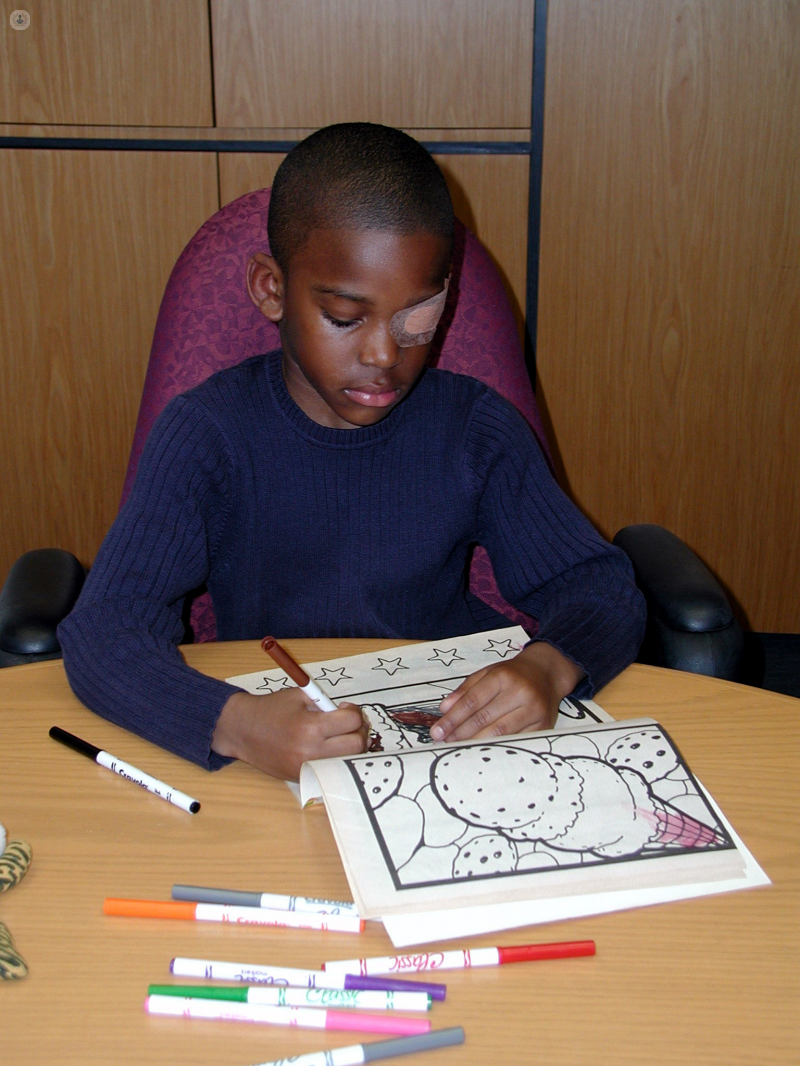



What is a lazy eye?
Amblyopia, better known as a lazy eye, is a common sight disorder where vision is decreased in an eye, and is not correctable by glasses or contact lenses. The eye suffers reduced vision because the brain is not acknowledging the information sent by that eye properly. It usually manifests in one eye, with the brain choosing to mainly accept visual information from the other, although in certain cases it may manifest as reduced vision in both.
It is a childhood disease, so it is highly important that it is corrected during early ages so that it does not end up becoming chronic.
What are the symptoms of amblyopia?
Most lazy eyes do not cause symptoms, with many children being unaware that there is a problem, and younger children often being unable to explain what is wrong. Some older children may have difficulty reading, writing, and drawing.
Sometimes, the eye may look different, although this is usually a direct symptom of another condition, which may be the root cause of the lazy eye. Such conditions include:
- The weaker eye may look in a different direction than the stronger one (strabismus)
- Childhood cataracts
- Refractive errors, such as myopia and astigmatism
Actions such as rubbing the eyes often, winking eyes or constantly blinking eyes are also indications that the child (or adult, in those cases not detected in time) suffers from a lazy eye.
Causes of a lazy eye
The main cause is an underdeveloped nerve pathway from the eye to the brain, formed during childhood.
These nerves transmit information from the retina (the light-sensitive layer at the back of the eye) to the brain, which interprets this information as vision. During the first eight years of a child’s life, this connection from the eyes to the brain is built, as the eyes show the brain images, and the brain learns to make sense of them. The brain may not be able to build strong pathways in the following situations:
- If a low amount of light is entering the eye (caused by cataracts, for example).
- If the eye is unable to focus light well (refractive errors).
- Where the images sent by the two eyes aren’t the same (e.g. in the case of strabismus).
Can a lazy eye be prevented?
As amblyopia is a predictable and treatable condition, it should be detected quickly. It is advisable that all children have a complete eye exam at least once between 3 and 5 years of age. Parents should watch out for the signs listed above.
What is the treatment for amblyopia?
If a lazy eye is a consequence of another condition, that condition must first be treated. Glasses can be used to treat hyperopia, myopia or astigmatism, while cataracts will have to be removed to allow light to enter the eye properly.
The child must then be encouraged to use the weaker eye to improve its connection to the brain. This can be done by reducing the brain’s reliance on the stronger eye, either by covering it with an eye patch, or temporarily blurring its vision with eye drops.
Treatment is usually effective, but gradual, usually taking months to work, and should not be stopped too soon, as progress can be lost.
After 7 or 8 years of age, the effectiveness of this correctional treatment is uncertain.